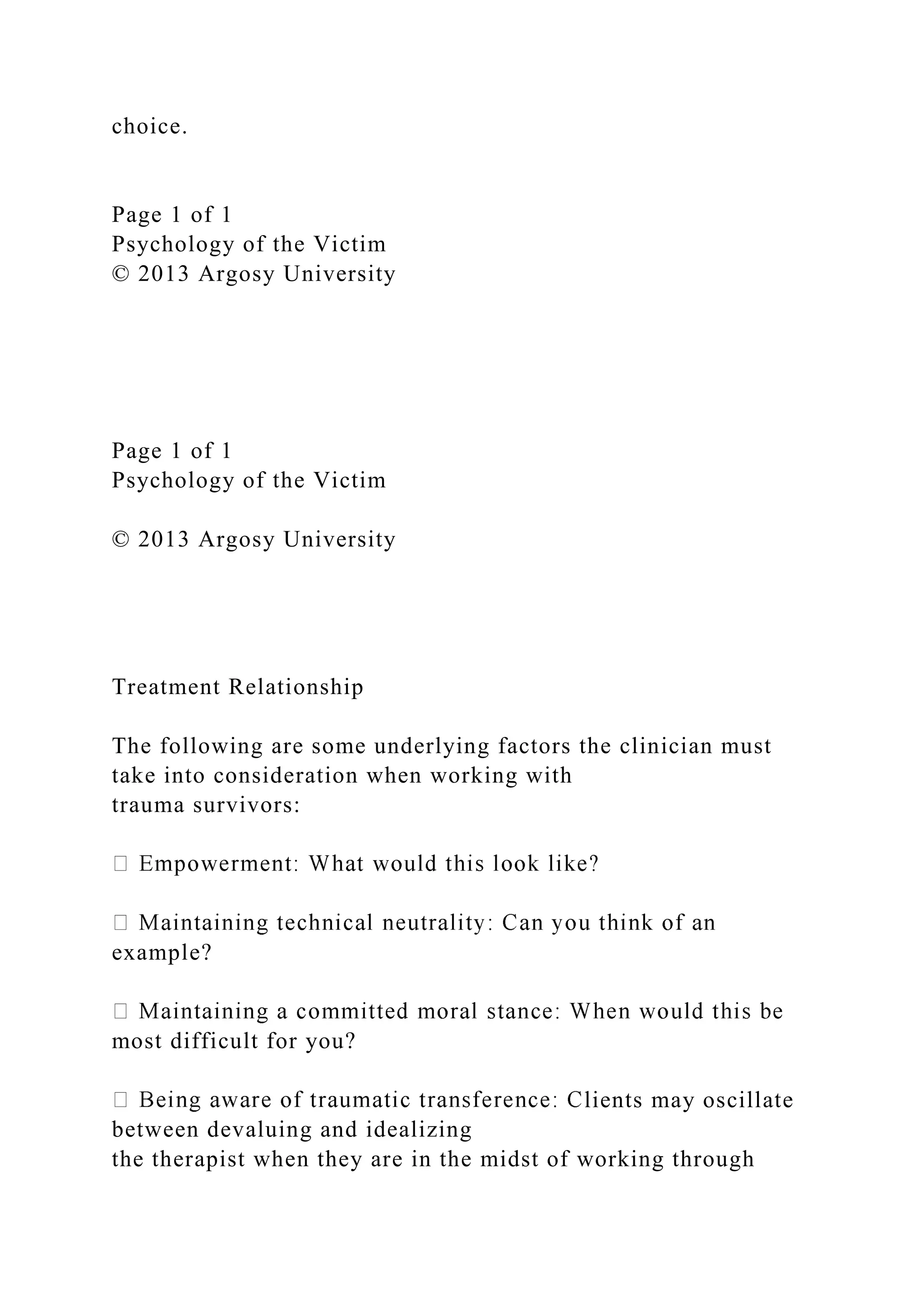The document outlines the assessment and treatment process for trauma survivors, focusing on understanding their experiences and emotions while developing individualized treatment plans. It emphasizes creating a safe environment, restoring control, and using specific assessment tools, including the DSM for provisional diagnosis, considering each survivor's unique needs. The case vignette of a college student named Laurel highlights the profound impact of trauma and the complexities involved in her psychological recovery.
![Module #: Assignment #
Student Name:
Date:
[Use this template to complete your assignment.]
Case Vignette: Assessment
Answer the following questions thoroughly:
1. You are the therapist Laurel chose to work with, and you give
Laurel an appointment to conduct an intake in order to start the
assessment process. During that appointment, she relays the
information mentioned in the vignette to you.
a. Describe the steps you will take to make Laurel feel
comfortable with telling her story to you.
b. Describe what methods you will use to continue with the
assessment process, knowing this may take three to four visits.
Be specific if you are considering using any instruments or
questionnaires. Explain the rationale for using each method, and
indicate what information you expect to find by using them.
c. Given the information you know at this point, what would be
your provisional diagnosis of Laurel?
i. Use DSM criteria (including appropriate diagnosis code
number). We are just looking at Axis I diagnosis for this
exercise.
ii. You may consider rule-outs. Any diagnosis you give should
have an explanation of the criteria/symptoms supporting your](https://image.slidesharecdn.com/moduleassignmentstudentnamedateusethistemp-221031185909-4630e8bf/75/Module-Assignment-Student-NameDate-Use-this-temp-docx-1-2048.jpg)









